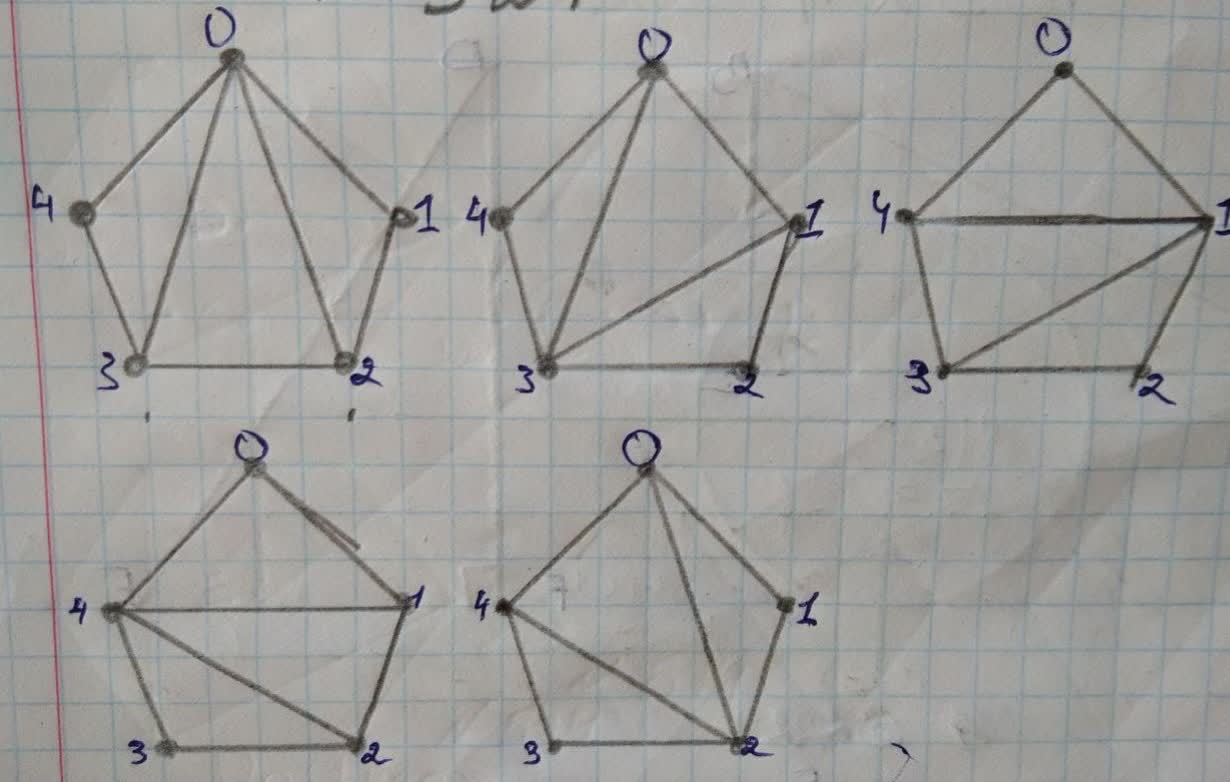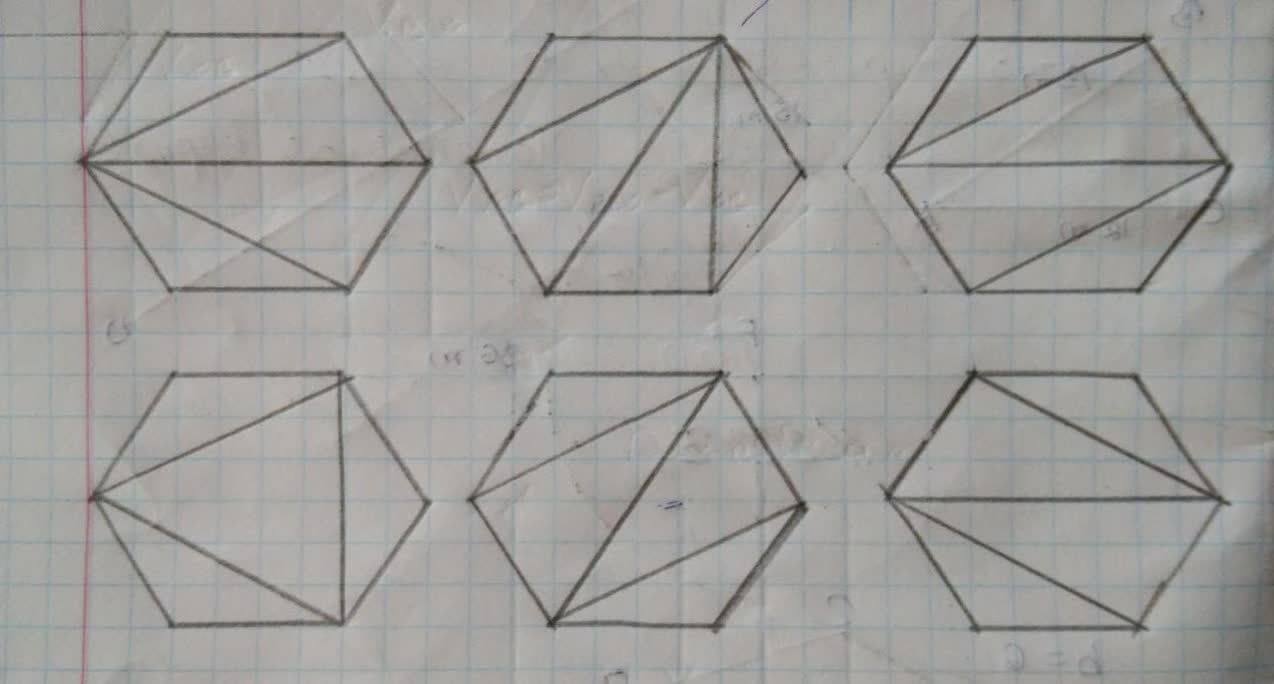Look at the triangulation of convex polygons again. Prove following statements: Any triangulation of a convex n-polygon subdivides it into n - 2 triangles. For example, every triangulation of a convex pentagon has 5 - 2=3 triangles, and every triangulation of a hexagon has 6-2=4 triangles
torfuqx
Open question
2022-08-18
Any triangulation of a convex n-polygon subdivides it into
For example, every triangulation of a convex pentagon has
Answer & Explanation
Daniella Cochran
Beginner2022-08-19Added 12 answers
In the question we have to prove that any triangulation of a convex n-polygon subdivides it into n - 2 triangles.
Step2
A convex polygon can be defined as a polygon whose interior angles are less than 180°.

A triangulation of a convex polygon is given by drawing diagonals between non-adjacent vertices or we can
say corners , also whose diagonal never intersect another diagonal (except at a vertex), until all possible ways of drawing diagonals have been used.
For proof of triangulation of a convex n-polygon subdiides it into n- 2 triangles we will sketch polygon of 5
and 6 sides and show every possible diagonal.
when n=5
as we can clearly see there are only 3 triangles possible in a convex pentagon, which proves the

statement any triangulation of a convex n-polygon subdivides it into n - 2 triangles.
when n=6
as we can clearly see there are only 3 triangles possible in a convex hexagon, which proves the
statement any triangulation of a convex n-polygon subdivides it into n - 2 triangles.
New Questions in Trigonometry
Find an equation of the plane. The plane through the points (2, 1, 2), (3, −8, 6), and (−2, −3, 1), help please
A consumer in a grocery store pushes a cart with a force of 35 N directed at an angle of below the horizontal. The force is just enough to overcome various frictional forces, so the cart moves at a steady pace. Find the work done by the shopper as she moves down a length aisle.
??What is the derivative of ?
What is the derivative of ?
Determine if the graph is symmetric about the -axis, the -axis, or the origin..
How to differentiate ?
What is the domain and range of ?
How to find the value of ?
How to evaluate ?
Using suitable identity solve (0.99)raised to the power 2.
How to find the derivative of ?
Find the point (x,y) on the unit circle that corresponds to the real number t=pi/4
How to differentiate ?
A,B,C are three angles of triangle. If A -B=15, B-C=30. Find A , B, C.
Find the value of .